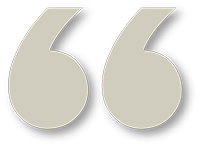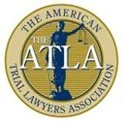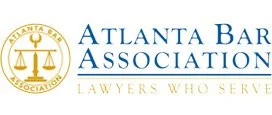A Legal Guide to Georgia Slip and Fall Accident Legal Claims
Key Points:
- In Georgia, property owners and managers can be responsible for your injuries if they neglect to address a hazard.
- Georgia law requires merchants and other businesses to keep the premises and approaching areas safe for invited customers and members of the public.
- Injuries from slip and fall accidents that are eligible for compensation can range from torn muscles and ligaments to broken bones or even paralysis or death and can often be proven using surveillance video, building codes, maintenance records, and prior claims.
Table of Contents
What is a Property Owner or Manager’s Responsibility Or Duty to Me?
You might have slipped and fallen on a slippery substance left on a floor or due to crumbling concrete or another trip hazard left unattended or un-repaired. These situations commonly happen in the aisle of a grocery store or restaurant or in the parking lot of a retailer or chain.
It is the responsibility of a property’s owner or manager to address hazards as soon as they are identified. They can do this by providing warning signs or eliminating the threat altogether. Neglecting to do so could make the responsible business liable for damages and injuries.
How is Responsibility for a Slip and Fall Injury Proven?
It is not uncommon for some businesses to argue that it is not possible to determine who is at fault for the slip and fall injury. For example, they will argue that with so many people around there’s no way to tell who spilled a drink or left an item in a walkway. Or, if you tripped and fell, a business may argue that you were not watching your step or are just naturally clumsey.
An experienced personal injury attorney can help you in these situations, but you can also investigate on your own. Attorneys will typically gather evidence, such as video from security cameras, eyewitnesses, damp or damaged clothing, obtain maintenance records (to prove that a pipe or cooler wsa leaking for days or weeks before you fell), and analyze building codes and industry standards to help determine who is responsible.
What are Some Ways Georgia Slip and Fall Claims May Be Proven?
Proving Claims Against Georgia Grocery Stores
While most grocery stores tend to have bright lighting and wider aisles, they are also one of the most common places for slip and falls to occur. Careless shoppers often drop items on the tile floors. This can range from a box of cereal to a bottle of water. The result is a hazard that can lead you to lose your balance. Unfortunately, grocery stores and their employees will usually try to blame other shoppers, rather than their own negligence, for causing your slip an fall.
The law in Georgia says that store personnel, from stock clerks to management, are responsible for maintaining the cleanliness and safety of the store. If you slip in a mess they failed to warn you about or clean up, and the store could or should have had adequate time to clean up the hazard, you may have a claim against the store for your injuries. Such claims can often be proven using store surveillance video, cleaning schedules and maintenance records.
Legal Resonsibility of Georgia Gas Stations and Convenience Stores
Gas stations and convenience stores are high-traffic areas, both for automobiles and pedestrians. They are also known to have gasoline, oil, and grease spills around the gas pumps and across the parking lot, as well as a lot of trash and debris around.
Convenience store parking lots, sidewalks and aisles can be slippery due to tracked-in substances as well as generally poor maintenance or cleanliness. Additionally, the aisles are usually narrow and customers are in a hurry to get in and out. As with grocery stores, store surveillance and maintenance records are often valuable evidence that can prove your case. Building codes and industry regulations should also be obtained and examined.
How to Hold Restaurants Accountable for Slip and Trip and Fall Cases in Georgia
As we all know, wet, greasy, or icy spills are extremely dangerous if not cleaned up promptly and thoroughly. Dim lighting also makes it difficult to see hazards. However, restaurants often deny responsibility for injuries, unfairly blaming customers for not paying attention or being intoxicated.
In Georgia, the restaurant through its servers and managers is responsible for providing a safe dining experience. Claims against restaurants can commonly be proven using surveillance video and aisle and restroom cleaning schedules. Injured customers or attorneys must act quickly to ask the restaurant to preserve video, financial records, and cleaning schedules from the day or night of the incident.
Proving Falls Against Georgia Medical Treatment Facilities
While medical facilities are there to help people in their time of need, they can also be dangerous. Hospitals, clinics, and nursing homes often have wet or slippery flooring, either from spilled liquids and bodily fluids or from dropped and discarded items. It’s vitally important for these facilities to maintain clean floors and doorways, not only for their patients but also for visitors. Moreover, many facilities have an additional duty to patients who are elderly, unstable and should be watched carefully to prevent them from falling over during examinations, treatment or while using the restroom.
Claimants and thier attorneys should gather the medical records to determine if a victim was on a fall protocol or reported feeling unsteady or dizzy and was not properly supervised. Maintenance records and video surveillance should be obtained to prove whether and how long a slippery substance or tripping hazard was present to show that the facility had time to discover and clean up the hazardous area.
How Atlanta Airport Slip and Fall Claims Can Be Proven
The Atlanta Hartsfield Airport is known to be a stressful environment with passengers hurrying to and from their flights. The crowds, the unfamiliar surroundings, many distractions and frenzied activity leads to many slip and fall injuries. The acres of tile flooring in airport terminals, food courts and restrooms and other areas hold spills or wet flooring, posing a danger to passengers rushing to and from their flights.
Atlanta Airport slip and fall claims may be proven by obtaining incident reports, surveillance videos, restroom and food service area cleaning records, and other records available through the Georgia Open Records Act or a subpoena served during litigation. It can also be a daunting, but not impossible, task to prove which merchant or vendor was responsible for keeping the area where you fell clean and hazard free. Prompt action and investigation can improve the odds of success.

 1201 West Peachtree Street #2339 Atlanta, GA 30309+1-770-212-3795$0-$100000
1201 West Peachtree Street #2339 Atlanta, GA 30309+1-770-212-3795$0-$100000Although I have not used their services, I have to say that the Millar Firm is also giving back to the community and helping schools with much needed supplies. Thank you!

Proving trip and slip and fall claims against Georgia Movie Theaters
A night out at the movie theater is a great way for you to spend a Saturday night, but the darkened room can hide potential slip-and-fall hazards suchas spills from soft drinks, popcorn, or other items. If you trip or slip and fall in a dark theater, expect the movie theater’s management and owners to try to blame you or your family!
Proving Movie Theater slip and trip and fall claims can sometime be done by proving that, while staff is supposed to clean the seating rows and aisles between each show, they failed to do so or cannot provide proof that cleaning was done. Additionally, the movie theater can, in some cases, be examined by an expert to determine if the safety lighting and floors and aisles are and were up to code.
Have More Questions or Want to Know your Georgia Legal Rights?
Georgia businesses and their insurance adjusters and defense attorneys are experts at trying to point the finger of blame at accident victims for not paying attention to where or how they were walking, blaming mystery non-parties for spilling a slippery substance, or blaming conditions beyond their control for what happened to you.
If you have questions about how to prove a slip or trip and fall case against a Georgia business establishment, our legal team will answer them for you at no charge. All of our consultations are free. Call or contact us today and we can explain your legal rights and what it may take to prove your case.















